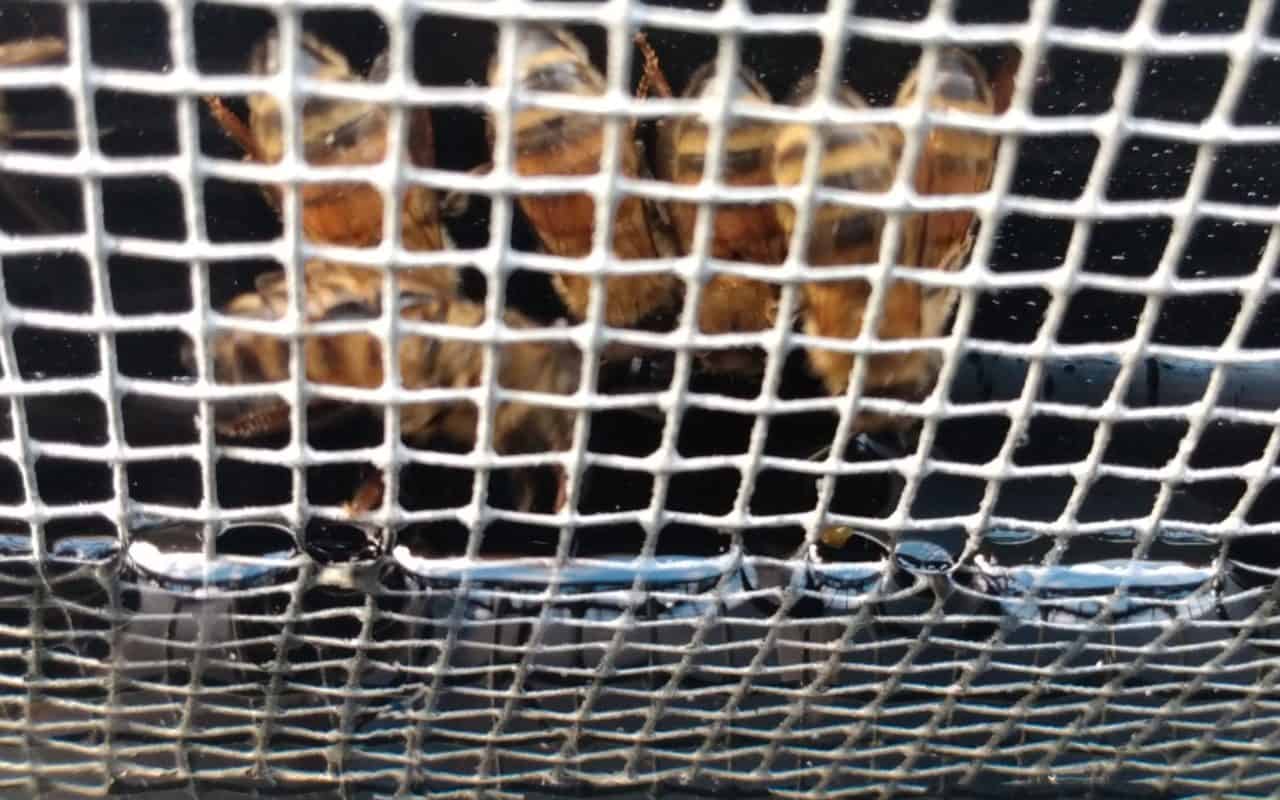Feeding colonies sugar syrup is something most beekeepers do, generally in the spring and/or fall. The purpose of feeding syrup can be to stimulate colony growth, sustain them through a dearth period, or build and maintain adequate stores for wintering. There are multiple methods for feeding syrup, each utilizing different pieces of equipment and having their own pros and cons. Previous blog posts discuss the use of gravity feeders and frame feeders, which are the two most commonly used feeders. A top feeder is a third method for feeding that is also a good choice under certain circumstances.
As the name suggests, a top feeder is placed on the top of the hive. Designs vary a little, but the basic setup is a shallow box (4”-5” depth) with a plastic reservoir to hold syrup, and hardware cloth to allow bees access to the syrup, while preventing them from drowning. Top feeders come in sizes to fit both 8-frame and 10-frame Langstroth equipment. Capacity varies a little between manufacturers, but 10-frame feeders usually hold about 4 gallons, and 8-frame feeders can hold a little more than 3 gallons.
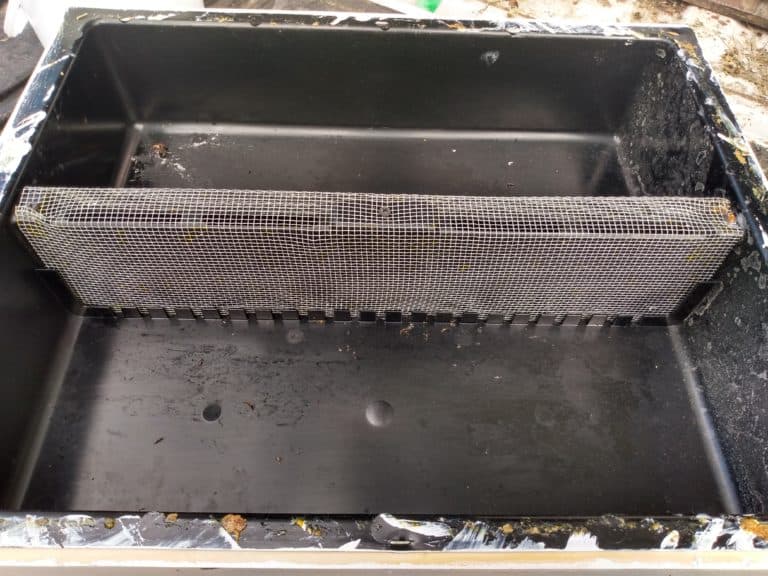
The top feeder’s high capacity is beneficial because it allows a large volume of syrup to be provided to a colony in a single visit. This may not be as important to beekeepers with colonies in the backyard who can regularly refill their feeders, but it can be a significant time-saver if apiaries are far away. The large access area the hardware cloth surface provides enables many bees to take feed at once, and therefore allowing a colony to rapidly consume a large quantity of syrup. This is particularly important during the fall when there is a narrow window in which to feed in order to assure brood chambers will have adequate stores for winter after supers are removed. My experience has been that colonies take syrup from top feeders a little slower than from a frame feeder, but faster than from a gravity feeder.
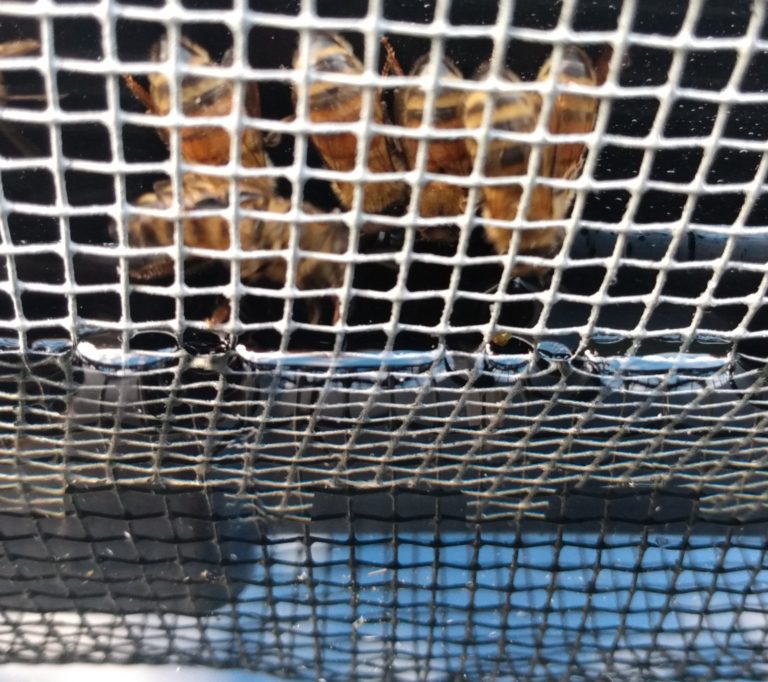
The wide, open design of top feeders allows for quick and easy filling compared to filling gravity or frame feeders, which can reduce the potential for spilled syrup and thus help to prevent robbing. Refilling a top feeder isn’t disruptive to the colony, as it only involves removing the lid and inner cover to access the feeder, leaving the bees below undisturbed. When feeding is over for the season, it is simple to rinse out the top feeder’s syrup reservoir and allow it to dry before stacking for storage. Another nice top feeder feature is that, unlike gravity feeders, they are not prone to leaking caused by temperature fluctuations or bad seals.
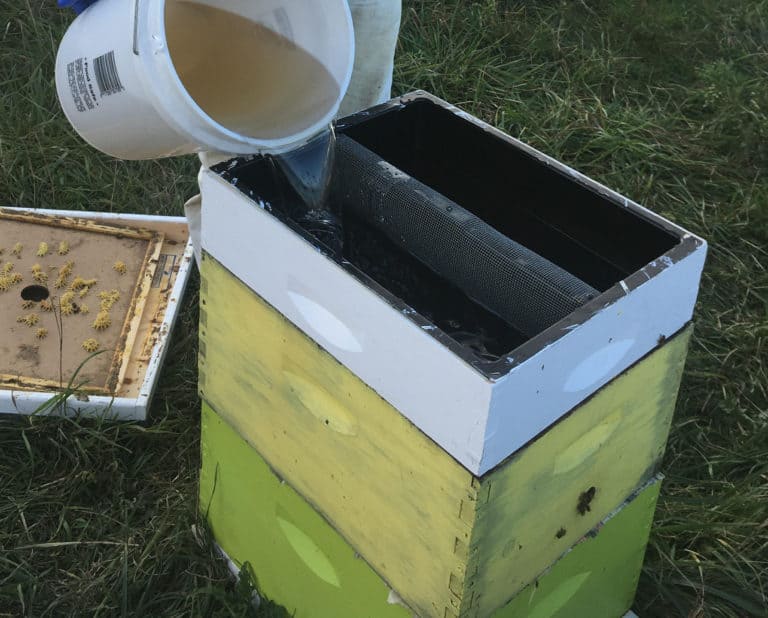
It is important to inspect top feeders before use to ensure the hardware cloth is “bee tight” to prevent access from below. Closing any gaps and filling any bee-size holes with silicon will prevent bee drowning. It is also important that access to the syrup from above is denied, but this is easily accomplished as long as the inner cover is in good condition and sits flush on top.
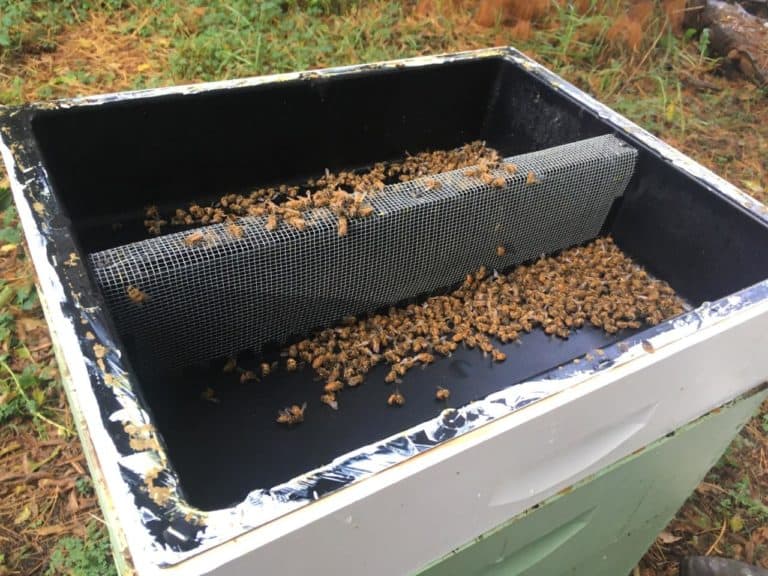
Top feeders similar to the model pictured above range from about $30- $35, but they can end up paying for themselves pretty quickly by saving time that would be spent traveling to and from apiaries in order to refill smaller feeders. Like most beekeeping management decisions, the best feeder to choose will depend on the individual situation, but having top feeders in your collection of beekeeping equipment gives you an extra option.
